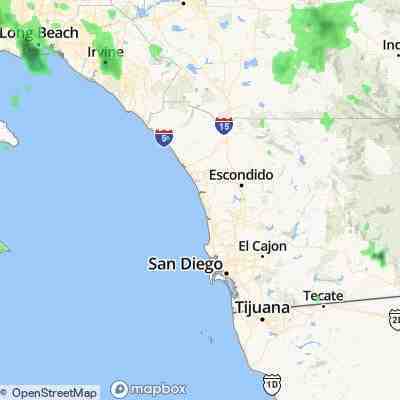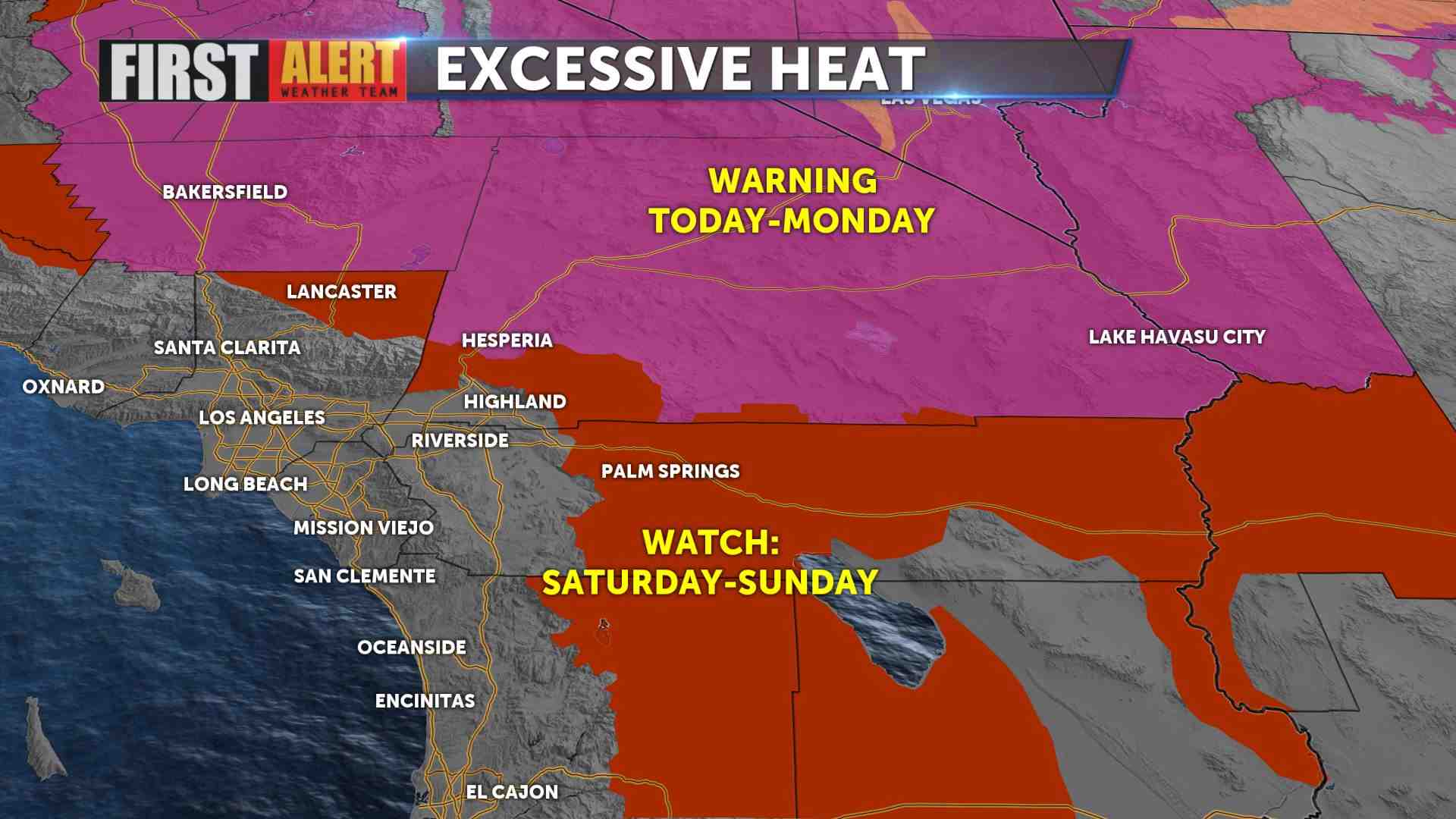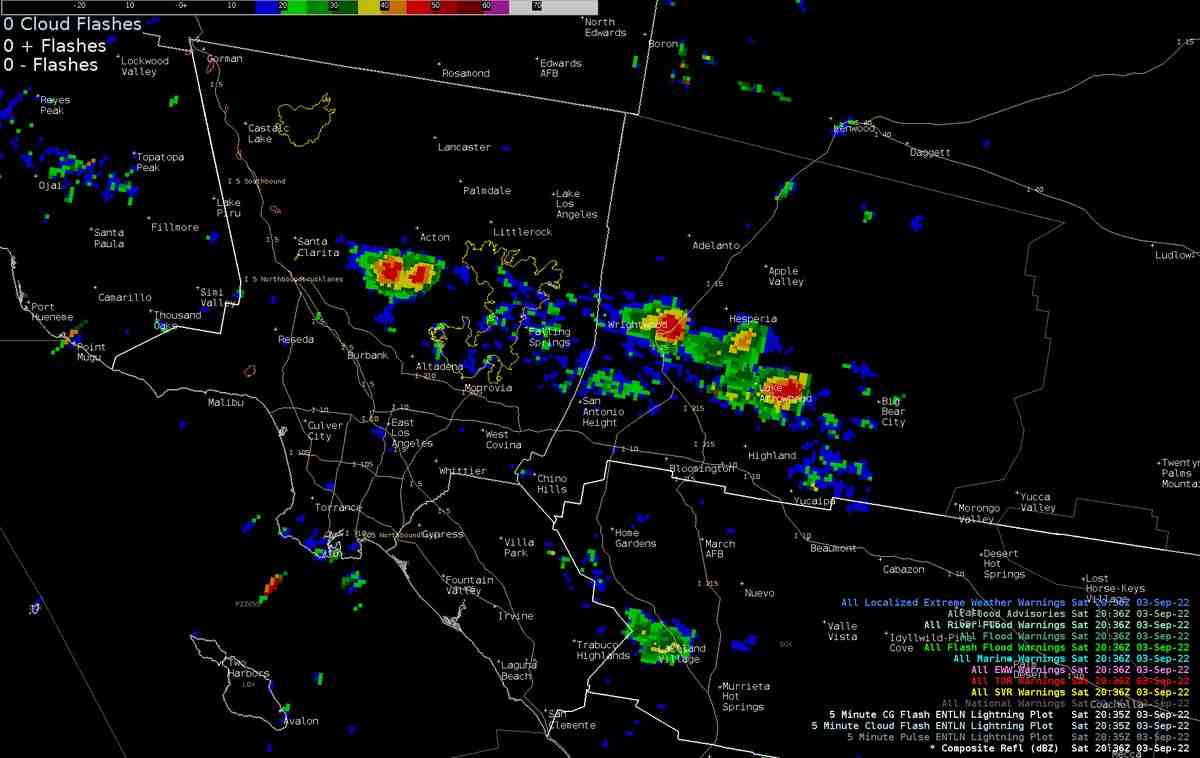ENCINITAS, Calif. – An excessive heat warning has been extended for the San Diego region as a record heat wave continues to bring high temperatures to California.
Temperatures have soared above 100 degrees every day since last Wednesday in Southern California, with little relief until this weekend.
The excessive heat warning in effect all weekend has been extended until 8 p.m. Friday for San Diego County, including the city of Encinitas, according to the National Weather Service. Dangerously hot conditions were expected in the region.
Find out what’s happening in Encinitaswith free, real-time updates from Patch.

“Extreme heat will significantly increase the potential for heat-related illness, especially for those who work or participate in outdoor activities,” the NWS warns.
The weather service advised community members to stay indoors and seek air-conditioned buildings. People should also drink plenty of water and avoid dehydrating alcoholic, sugary or caffeinated drinks; dress in light, light-colored clothing; eat small but frequent meals; and watch out for those who may be particularly sensitive to heat, including young children and the elderly.
Find out what’s happening in Encinitaswith free, real-time updates from Patch.

“Know the signs and symptoms of heat exhaustion and heat stroke,” the NWS advises.
Wednesday Sunny, with a high near 80. West wind around 5 mph.
Wednesday evening Partly cloudy after 11 pm. Otherwise, mostly clear, with a low around 72. West wind around 5 mph becoming calm in the evening.
Thursday Patchy fog before 8am. Otherwise, mostly sunny, with a high near 80. Light and variable wind becoming northwest 5 to 10 mph in the afternoon.
Thursday Night Partly cloudy, with a low around 75. Northwest wind 5 to 10 mph becoming southeast after midnight.
Friday Slight chance of showers and thunderstorms after 11am. Partly sunny, with a high near 91. Windy, with an east wind 15 to 25 mph increasing to 25 to 35 mph in the afternoon. Wind gusts could reach up to 40 mph. There is a 20% chance of precipitation.
Friday Night A chance of showers and thunderstorms, then showers and possibly a thunderstorm after 11:00 PM. Mostly cloudy, with a low around 74. Chance of precipitation is 60%.
Saturday Showers are possible, and thunderstorms are possible. Mostly cloudy, with a high near 76. A 70% chance of precipitation.
Saturday night A chance of showers and thunderstorms, mostly before 11 p.m. Mostly cloudy, with a low around 72.
Sunday Chance of showers and thunderstorms, mainly after 11 am. Partly sunny, with a high near 75.
Sunday evening A slight chance of showers and thunderstorms before 11 p.m. Mostly cloudy, with a low around 72.
The rules of replying:
How long does it take to get heat stroke?

Heat stroke can occur quickly over 10-15 minutes, or slowly, developing over several hours or days. It is important to monitor someone for signs of heat exhaustion or heatstroke for several days after exposure to extreme heat.
Is it easy to get heat stroke? People who are not used to hot weather are especially susceptible to heat-related illnesses. It may take your body a few weeks to adjust to the hot weather. Be careful if you are at increased risk.
Does heat stroke develop slowly or suddenly?
Heat exhaustion or heat stroke can develop quickly, within minutes, or gradually over hours or days. Symptoms of heat exhaustion may include: fatigue and weakness.
Is heat stroke gradual?
The onset of heatstroke can be sudden or gradual. Heatstroke is a life-threatening condition due to the potential for multiorgan dysfunction, with typical complications including seizures, rhabdomyolysis, or renal failure. Heat stroke occurs due to high external temperatures and/or physical exertion.
What does the beginning of a heat stroke feel like?
A core body temperature of 104 F (40 C) or higher, obtained with a rectal thermometer, is the main sign of heat stroke. Altered mental state or behavior. Confusion, agitation, slurred speech, irritability, delirium, seizures, and coma can result from heat stroke.
Can you get heat stroke the next day?
It is important to note that heat illnesses are not continuous and that one condition does not lead to another condition, although heat exhaustion on one day may predispose an individual to heat illness the next day. A common misconception is that heat exhaustion can lead to heat stroke.
What does heat exhaustion feel like the next day?
Symptoms of heat exhaustion can include dizziness, headache, nausea, muscle cramps and others. Treatment includes removal of heat, rest, and fluids. Untreated, heat exhaustion can lead to heat stroke, which can be a life-threatening condition.
How long does it take for heat stroke to take effect?
It occurs when the body can no longer control its temperature: the body temperature rises rapidly, the sweating mechanism breaks down and the body cannot cool down. When heatstroke occurs, the body’s temperature can rise to 106°F or more within 10 to 15 minutes.
How do I know if I got heat stroke?
Symptoms of heat stroke include: confusion, altered mental status, slurred speech. Loss of consciousness (coma) Hot, dry skin or profuse sweating.
How long does it take to show signs of heat stroke?
How soon do symptoms of heat stroke appear? Heat stroke can occur quickly over 10-15 minutes, or slowly, developing over several hours or days. It is important to monitor someone for signs of heat exhaustion or heatstroke for several days after exposure to extreme heat.
How do I know if I am having a heat stroke?
A core body temperature of 104 F (40 C) or higher, obtained with a rectal thermometer, is the main sign of heatstroke. Altered mental state or behavior. Confusion, agitation, slurred speech, irritability, delirium, seizures, and coma can result from heat stroke.
How do I complain about a temp at work?

It’s too cold. What can we do?
- Tell your manager that you don’t think the temperature is reasonable. …
- Ask your manager for a thermometer so you can check the temperature. …
- Tell the UCU health and safety representative that it is not warm enough and ask them to come and investigate and raise the issue with management.
Can employees contact OSHA? The Occupational Safety and Health Act of 1970 gives employees and their representatives the right to file a complaint and request an OSHA inspection of their workplace if they believe there is a serious hazard or their employer is not following OSHA standards.
How do I anonymously report an employee?
Submit an anonymous report Some companies have an online silent witness report form or a 24-hour anonymous hotline to report employee concerns. Or, you could write an unsigned note and slip it under the manager’s door, for example. The downside of reporting anonymously is that your complaint may not be considered credible.
How do I file a complaint with the NYS Department of Labor?
If you have questions or concerns, you can call us at 1-866-487-9243 or visit dol.gov/agencies/whd. You will be directed to the nearest WHD office for assistance.
How do I contact the NYS Department of Labor?
Call 1-888-209-8124 or go to labor.ny.gov.
How do I file a complaint against NYS unemployment?
Call our hotline toll free at (888) 598-2077. Your call can be made anonymously. Apply by mail to: New York State Department of Labor, Office of Special Investigations, Building 12 – Room 576, W. Averell Harriman Campus, Albany, NY 12226.
Are OSHA complaints Anonymous?
A whistleblower complaint filed with OSHA cannot be filed anonymously. If OSHA continues to investigate, OSHA will notify your employer of your complaint and give the employer an opportunity to respond.
Does OSHA keep complaints confidential?
OSHA takes complaints from employees and their representatives seriously. It is against the law for an employer to fire, demote, transfer or discriminate against an employee in any way for filing a complaint or exercising other OSHA rights. OSHA will keep your information confidential.
Does OSHA keep you anonymous?
Are there anonymous OSHA reports? You can request that OSHA keep your complaint anonymous, but this is not guaranteed. The OSHA agent will keep you anonymous if possible. In fact, OSHA is legally required to protect your identity as best it can.
What temperature should you not run in?

Temperature Concerns The Centers for Disease Control and Prevention warns that 95 degrees Fahrenheit is when the body’s cooling processes begin to fail, so it’s best to skip running. You’ll also need to consider humidity, because the higher the humidity, the hotter it is.
How hot is too hot to run? Understand heat index data: Avoid running outside if the heat is above 98.6 degrees and the humidity is above 70-80%. If the humidity in the air is so high that it prevents the evaporation of sweat from the skin, you can quickly overheat and literally cook your insides from the increased body temperature.
What temperatures are too cold to run in?
A good rule of thumb to follow is that if it’s -20 degrees Fahrenheit (including wind chill), stay inside at all costs. If the temperature is between that and 25 degrees F, running can be done with proper cold weather precautions, but if you have a medical condition, you should check with your doctor before getting dressed.
Is 45 degrees too cold to run?
Hypothermia. Believe it or not, hypothermia can become a risk when running in temperatures that start at 45 degrees or below. Hypothermia is when your core body temperature drops below 95 degrees Fahrenheit and can cause disorientation, numbness, and even cardiovascular complications if not properly monitored.
Is it OK to run in 30 degree weather?
Running in the heat of 30 degrees Celsius is not without risks, it can easily cause dehydration, overheating which can lead to muscle cramps, excessive sweating, headache, nausea, fatigue and dizziness.
Can you run in 45 degree weather?
What to wear according to the temperature. 40 to 50 degrees: Light capris or shorts with a long-sleeved shirt layered over a tee or tank. After you’ve warmed up, you may want to remove the long-sleeved top. Wear light gloves and an ear band if your extremities are cold.
Can you run outside in 40 degree weather?
Avoid Overdressing It’s easy to overdress when you’re running in 40-degree weather. Keep in mind that your body temperature rises when you run, and overdressing increases the risk of overheating and excessive sweating. Hadfield recommends dressing for temperatures that are 15 to 20 degrees warmer than outside.
Is it OK to run in 50 degree weather?
Most runners find that 50 degrees, while ideal for performance, is a bit cold when they first get going. Start with a short-sleeved base layer or even a tank top, whichever you prefer after you’ve warmed up. Then add a lightweight long sleeve top over that.
Is it safe to run in extreme cold?
“You shouldn’t run outside for more than 30 minutes in sub-zero temperatures,” he says. In addition to the risk of hypothermia and frostbite, dr. Fealy says you have a reduced ability to feel pain in sub-zero temperatures.
Is it okay to run in extreme cold?
Exercising in very cold weather can damage the lungs over time, a researcher warns. High-intensity running or ski racing in temperatures below -15C can cause irreversible lung damage, says an exercise physiologist who recommends three ways to prevent it.
Is it healthy to run when its cold?
Today’s program is for people who like to run. The cold weather during the winter months can prevent many people from leaving their homes and running outdoors. However, a new study shows that the drop in temperature is a good reason to go for a run. In fact, researchers say, running in cold weather helps improve performance.
Is it safe to run in high temperatures?
Running in the heat and humidity can put you at risk for dehydration, heat stroke, and other heat-related illnesses.
Is running in extreme heat good for you? Numerous studies have shown that training in hot conditions, two to three times a week for 20 to 90 minutes, can produce a variety of beneficial training effects. These include: A lower core temperature at the onset of sweating. Increased plasma volume (Plasma is the liquid component in your blood.
Is it safe to run in 100 degree heat?
The best way to improve heat tolerance and reduce the risk of heat illness is to gradually get used to exercising in hot environments, a process that takes 7 to 14 days. “Don’t go out and run for an hour in 100-degree weather right at the start,” says Crandall.
What heat index is too hot to run?
Heat Index: 130 degrees F Health Effect: Heat/sunstroke is very likely with continued exposure Recommendations: Avoid strenuous outdoor activities. Stay indoors in an air-conditioned facility. Stay well hydrated.
Is 90 degrees too hot to run?
But while running in the heat can be considered a risk for some people — such as children, the elderly, and pregnant women — as long as precautions are taken, running in temperatures up to 8695°F is fine.
Can you run in high temperatures?
Yes, running in the heat can make you a better runner. You will run slower in hot weather because your body is working hard to cool down. This work will make you a better runner in colder weather. This is because your body goes through physiological adaptations to work with less oxygen.
Is it okay to run in 90 degree weather?
But while running in the heat can be considered a risk for some people — such as children, the elderly, and pregnant women — as long as precautions are taken, running in temperatures up to 8695°F is fine.
At what temperature should you not go running?
What is this? Some runners find they can only handle running in sub-zero temperatures (32 degrees Fahrenheit or 0 degrees Celsius), but much below that they have trouble breathing or feel like their numb toes are going to fall off.






